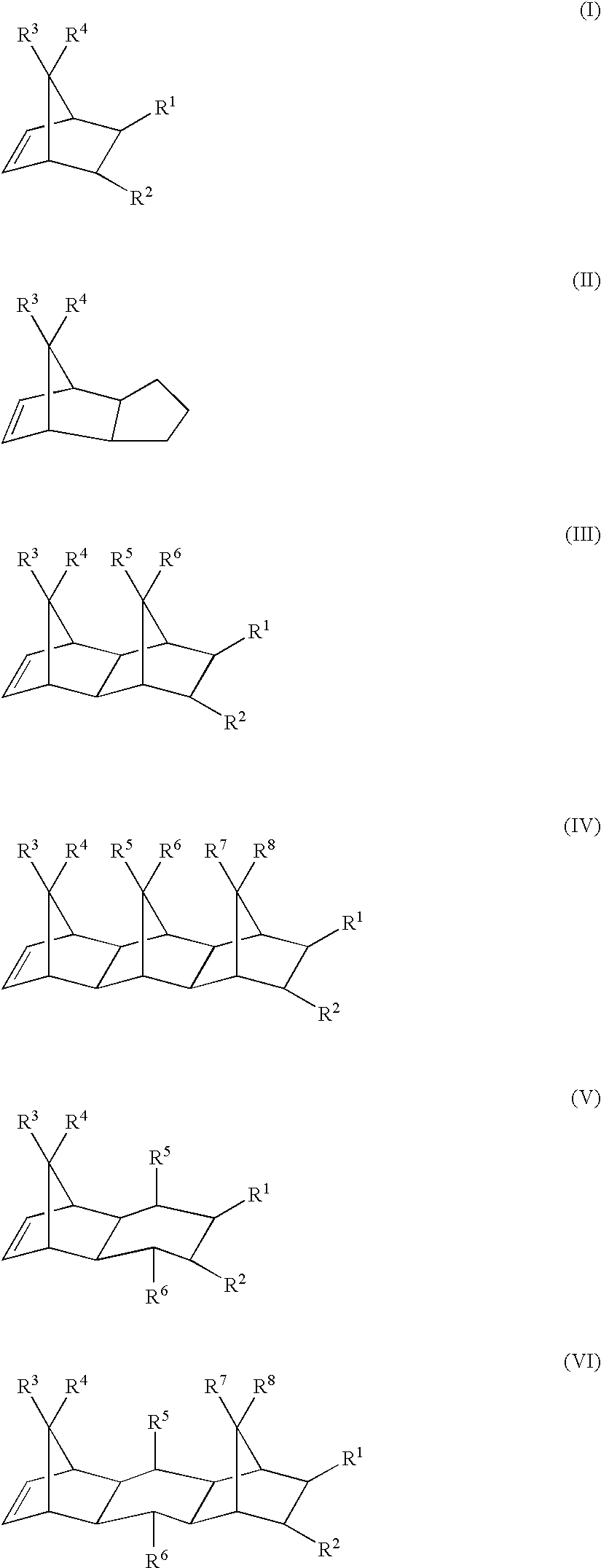White, biaxially-oriented polyester film with cycloolefin copolymer (COC), which is matt on at least one side, method for production and use thereof
a polyester film, biaxial orientation technology, applied in the direction of magnetic recording, lamination, packaging, etc., can solve the problems of uneconomic process, unreusability, regrinding during film production, etc., to achieve excellent suitability for packaging, good processing and winding performance, and excellent suitability for industrial use
- Summary
- Abstract
- Description
- Claims
- Application Information
AI Technical Summary
Benefits of technology
Problems solved by technology
Method used
Image
Examples
example 1 (
INVENTIVE)
[0078]Chips of polyethylene terephthalate (prepared by the transesterification process using Mn as trans-esterification catalyst, Mn concentration: 100 ppm) were dried at 150° C. to a residual moisture below 100 ppm and fed to the extruder for the base layer B. Alongside this,chips of ® Topas 6015 cycloolefin copolymer (COC) from Ticona (COC composed of 2-norbornene and ethylene, see also W. Hatke: Folien aus COC [COC Films], Kunststoffe 87 (1997) 1, pp. 58-62) with a glass transition temperature Tg of about 160° C. were also fed to the extruder for the base layer B. The proportional amount of the cycloolefin copolymer (COC) in the base layer was 10% by weight.
[0079]Coextrusion followed by stepwise longitudinal and transverse orientation was used to produce a white, opaque, three-layer film with ABC structure, with a total thickness of 23 μm, and with one matt side. The thickness of each of the outer layers is given in Table 2.
[0080]
Matt outer layer A, a mixture of:55.0%by...
example 2 (
INVENTIVE)
[0084]Taking Example 1 as a basis, 50% by weight of regrind was now added to the base layer. The amount of COC in the resultant base layer was again 10% by weight. The process parameters were unchanged from Example 1. Visual observation was made of the extent of yellow discoloration of the film. It is seen from Table 2 that hardly any yellow discoloration of the film was visible.
example 3 (
INVENTIVE)
[0085]Taking Example 1 as a basis, a film of thickness 96 μm was now produced. The amount of COC in the base layer was 8% by weight. The process parameters were unchanged from Example 1. Visual observation was made of the extent of yellow discoloration of the film. It is seen from Table 2 that hardly any yellow discoloration of the film was visible.
[0086]
Base layer B, a mixture of:92.0%by weight of polyethylene terephthalatehomopolymer with SV 800 8.0%by weight of cycloolefin copolymer (COC) fromTicona, Topas 6015
PUM
| Property | Measurement | Unit |
|---|---|---|
| glass transition temperature Tg | aaaaa | aaaaa |
| roughness | aaaaa | aaaaa |
| glass transition temperature Tg | aaaaa | aaaaa |
Abstract
Description
Claims
Application Information
 Login to View More
Login to View More - R&D
- Intellectual Property
- Life Sciences
- Materials
- Tech Scout
- Unparalleled Data Quality
- Higher Quality Content
- 60% Fewer Hallucinations
Browse by: Latest US Patents, China's latest patents, Technical Efficacy Thesaurus, Application Domain, Technology Topic, Popular Technical Reports.
© 2025 PatSnap. All rights reserved.Legal|Privacy policy|Modern Slavery Act Transparency Statement|Sitemap|About US| Contact US: help@patsnap.com



